Department of Botany, Jai Narain Vyas University, Jodhpur Rajasthan, India
Article Publishing History
Received: 12/07/2016
Accepted After Revision: 20/08/2016
The indigenous systems of medicine in India are Ayurvedic, Siddha and Unani. These traditional systems of medicine together with homeopathy and folkcare medicine play an important role in the health care system of the population. Sarcostemma viminale (L.) R.Br. and Ceropegia bulbosa Roxb. belongs to the milkweed family i.e. Asclepiadace, distributed in various habitats in semi-arid region of Thar desert of Rajasthan. This work was carried out to explore morphological pecularities of whole plant of both the representatives of the family. Sarcostemma viminale (L.) R.Br. is used to cure diarrhoea, oedema, stomach problems and tuberculosis. Ceropegia bulbosa is used to cure deafness, tubers are used in the treatment of kidney stone, urinary tracts diseases and they are eaten by ladies to enhance fertility and viability. Pollinial apparatus is a significant feature of Asclepiadaceae to characterize species and genera. Morphological study revelaed principle characteristic differences and similarities in both the representatives plants. True xerophytic features of Sarcostemma viminale (L.) R.Br. are, presence of milky latex, highly reduced leaves, green globarous stem, and strong tap root affixed firmly in stony and rocky substratum in association with other xerophytic plants of stressed conditions. Ceropegia bulbosa Roxb. var. bulbosa and var. lushii (Grah.) Hook.f. is perennial, twining, herb of sandy substratum, bearing tubers, needs support of other xerophytic bushes/ shrubs. Both the representative genera under study are almost endangered. Since no report on systematic and comparative morphological analysis of whole plant of both the representatives is available, an effort has been made to prepare a protocol to provide the keys for taxonomy and better understanding of flora.
Asclepiadaceae, Ceropegia Bulbosa Roxb., Endangered, Latex, Morphology, Pollinia, Sarcostemma Viminale (L.) R.Br., Tuber
Arora S, Meena S. Morphological Screening of Endangered Medicinal Plants of Milkweed Family from Thar Desert, Rajasthan, India. Biosc.Biotech.Res.Comm. 2016;9(3).
Arora S, Meena S. Morphological Screening of Endangered Medicinal Plants of Milkweed Family from Thar Desert, Rajasthan, India. Biosc.Biotech.Res.Comm. 2016;9(3). Available from: https://bit.ly/2Myn48L
Introduction
Medicinal plant products have a long history of indigenous use in india as well as other countries (Hinemath et al., 2000). The research on medicinal plants are important leading area in the world (Boomibalagan et al., 2014) . Several medicinal plants remain associated with antifertility properties (Madhumita and Saral, 2009). The plants of family Asclepiadaceae remains distributed from south East Asia, India, Madagascar, Tropical Arabia, Canary Island, Africa except Mediteranean region, new Guinea and north Australia (Bruyns, 2003; Dyer, 1983). The family Asclepiadaceae was previously ranked as family and now it is treated as a subfamily of Apocynaceae. This view was also upheld by the Angiosperm Phylogeny Group (APG 2003, 2009). It is comprised of approximate 130 genera and 2000 species tropical as well as subtropical, mostly shrubs, often twining or perennial herbs (Indhumathi and Kalvimoorthi, 2010).
Both of the plant representatives under study were reported from semi arid and stressed regions of Rajasthan, the biggest state of India is situated in the north western part. A striking geological feature of the state is the Aravalli range which divides the state into two physiographic regions, the 2/3 sandy arid plain is unproductive, Thar Desert and 1/3 eastern fertile region is comparatively rich in vegetation. The Thar Desert encompasses about 70% of total landmass of Rajasthan and hence it is identified as the “Desert state of India”. The average temperature in winter ranges from 8° to 28°C (46° to 82° F) and in summer the average temperature range from 25° to 46°C (77° to 115° F).
Sarcostemma is a genus of at least 35 species of flowering plants. The plants are well adapted to xeric conditions of Thar Desert. It inhabits dry and rocky areas on hills. The soft stem is filled with milky white latex that is poisonous and caustic in some species, so often named as caustic vine. The flowers have a ring of thick tissue at the base which extends into hollow spherical appendages within the flower corolla (GRIN, 2011). It is more branched, leaves are either absent or highly reduced, grows always in association with Euphorbia caducifolia (Shetty and Singh, 1993).
Ceropegia is old world tropical genus of climbers and it contains about 200 species, of which 49 species are found in India. It grows sporadically in red lateritic soil. Flowering occurs during July-September. This genus has always been a lure to the researchers because of structural and adaptive strategies (Percival, 1969). Flower design, corolla size, shape and coloring pattern etc. are some special characters of this genus. Among different species Ceropegia bulbosa is one of the widely distributed species but still threatened (Yadav and Kamble, 2008). Two varieties of Ceropegia bulbosa were analyzed morphologically i.e. Ceropegia bulbosa Roxb. var. bulbosa and Ceropegia bulbosa Roxb. var. lushii (Grah.) Hook.f. The former one is characterized by broad leaves while the later is a narrow leaved variety (Cooke, 1958). Several species of Ceropegia are facing different threats and almost 16 species have been recorded under different categories in Red Data Book (Nayar and Sastry, 1987-89).
The main objective of this paper was to investigate the morphological parameters of Sarcostemma viminale (L.) R.Br. and Ceropegia bulbosa Roxb. to understand the strategies, these plants develop to survive in stressed desertic conditions of Thar Desert.
Material And Methods
Sarcostemma viminale (L.) R.Br. was collected from Jodhpur district, that is centrally situated in the western region of the state, and covers a total geographical area of 22850 Sq. Kilometers. It lies between 26°0’ and 27°37’ north latitude and 72°55’ and 73°52’ east longitude. The district lies at a height of 250-300 meters above sea level. Ceropegia bulbosa was collected from Jaipur, Ajmer, Bhilwara, Chittorghar, Udaipur and Karoli district of Rajasthan. All the plant specimens were collected during month of July-September 2015. “The Flora of Indian Desert” (Bhandari, 1978) was also consulted for identification, and then the specimens were finally authenticated by BSI (Botanical Survey of India), Jodhpur (Rajasthan). Photomicrographs of the plant in its original habitat were taken in the field to display the surface feature of the leaf, stem, root and flower. These organs were photographed in closer views. The specimens of both plant species were packed in air-tight poly bags. The specimens were sprayed with fungicide & pesticides for preparing herbarium sheets.
For morphological studies flowering twigs & herbarium samples were examined through the conventional taxonomical procedure adopted by Bentham and Hooker (1873) and Prain (1903). Morphological parameters of taxonomic value were determined.
Results And Discussion
The study revealed valuable differences and similarities in morphology of two representatives genera of same family. Remarkable differences were observed in their habit, habitat, height, leaf appearance (size, shape and color) and in floral appendages.
(1) Botanical Name: Ceropegia bulbosa Roxb. Ceropegia bulbosa Roxb. var. bulbosa
Local name: Art khadula, Barbatta, Khaparkundis
Global Distribution: India and Pakistan
Indian Distribution: Maharashtra, Karnataka, Tamil Nadu, Andhra Pradesh, Rajasthan, Gujarat, Punjab, Orissa and West Bengal.
Ceropegia bulbosa Roxb. var. lushii (Grah.) Hook.f. : Local name: Hedulo, Solari,
Global distribution: India and Pakistan
Indian distribution: Karnataka, Kerala,Tamil Nadu and Rajasthan.
Habit
Ceropegia bulbosa Roxb. var. bulbosa and var. lushii (Grah.) Hook.f. both are small, perennial herbs grows amongst thorny and spiny bushes of Capparis deciduas and Prosopis julifera on which they climbs and also gets protected against grazing animals. It requires sandy soil mixed with some stony fraction. It was observed that both varieties were growing together at same place (Fig. 1)
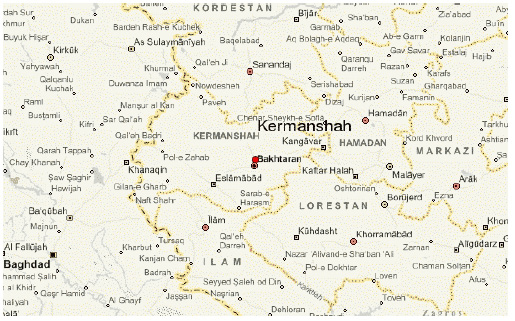 |
Figure 1: (A) Ceropegia bulbosa Roxb. var. bulbosa (B) Ceropegia bulbosa Roxb. var. lushii (Grah.) Hook.f. |
Root
10 specimen from different location were used for recording texture, type and measured by calculating mean value. Roots of Ceropegia bulbosa Roxb. var. bulbosa emerged out from turnip like tuber (4×2.5 cm) that is glabrous, creamish brown, globose to elliptical, broad at top and narrows down, edible. Maximum 11 roots of variable length were observed emerging from the tuber, root hairs are very small. The tubers and roots grow approximately 6-8′ beneath the substratum.
Roots of Ceropegia bulbosa Roxb. var. lushii (Grah.) Hook.f. shows similar morphological characters except its size that varies between 3×2.4-3×2.8cm (Fig. 2)
 |
Figure 2: (A) Tuber of Ceropegia bulbosa Roxb. var. bulbosa (B) Tuber of Ceropegia bulbosa Roxb. var. lushii (Grah.) Hook.f. |
Stem
Morphological feature and measurements were recorded using 10 specimens from different location and data were analysed; stem of Ceropegia bulbosa Roxb. var. bulbosa is herbaceous, dark green climber, cylindrical, smooth, branched with nodes and internodes of variable distances, highest intermodal distance measured is 10 cm.
Stem of Ceropegia bulbosa Roxb. var. lushii (Grah.) Hook.f. shows similar morphological characters except the color that is less green and the maximum internodal distance is 6.7 cm (Fig. 3).
 |
Figure 3: (A) Stem of Ceropegia bulbosa Roxb. var. bulbosa (B) Stem of Ceropegia bulbosa Roxb. var. lushii (Grah.) Hook.f. |
Leaf
Leaf measurement (length and width) were recorded using 10 leaves of plant, mean value was recorded and detailed morphological parameters are as follows; leaf of Ceropegia bulbosa Roxb. var. bulbosa develop on nodal region of the stem, abaxial surface dark green, adaxial surface light green, petiolate (1.8-2.3 cm), base rounded, simple, glabrous, fleshy, stipulate, 2-3 leafs arises at each node, opposite, superposed, margin slightly undulate, diameter varies between 3-3.8×2.5-3.3cm, elliptic-oblong, lowest almost orbicular, largest leaves are present almost at the middle of the stem, apex acute-mucronate, pinnate venation.
Leaf of Ceropegia bulbosa Roxb. var. lushii (Grah.) Hook.f. shows almost similar morphological characters except the color that is less green and shape that is linear, diameter varies between 12-15×0.8-1 cm, elliptic or elliptic lanceolate, petioles 4-8mm (Fig. 4).
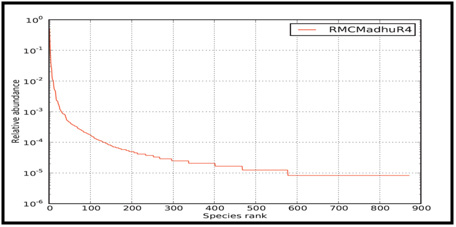 |
Figure 4: (A, B) Bifoliate and trifoliate leaves of Ceropegia bulbosa Roxb. var. bulbosa (C) Leaves of Ceropegia bulbosa Roxb. var. lushii (Grah.) Hook.f. |
Flower
10 specimens were analyzed for recording floral measurement; flower of Ceropegia bulbosa Roxb. var. bulbosa are pendunculate (1-2.5cm), pedicillate (0.5-2 cm), simple umbel or cymose type, arises from axil of leaf, pentamerous, hermaphrodite, actinomorphic, regular, white at base and purple at top, sepals; 5, free at top, 2-3mm long, lanceolate, smooth, valvate, petals; 5, broad and fused at base, narrower and free at top, ends enrolls and make a tube like structure to make a cage (corona) that is a nectar producing region, showing conservative pollination system that may employ only small insects, hairy at top, maximum length reaches to 3.3cm, valvate, stamens; 5, adnate at base of 5 styles, pollinarium is present at base of each style making gynostegium, ovary; bicarpilary, bilocular, apocarpous, placentation marginal with many ovules.
Flower of Ceropegia bulbosa Roxb. var. lushii (Grah.) Hook.f. is almost morphologically similar except its color that is whiter and less purple at top (Fig. 5).
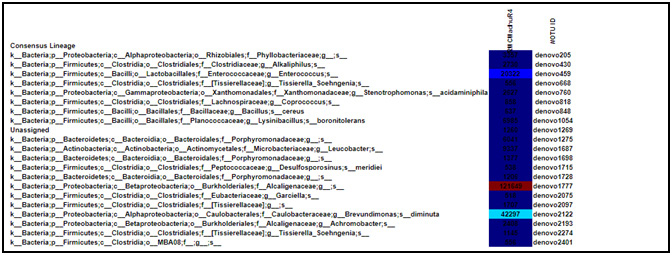 |
Figure 5: (A,B) Flowers of Ceropegia bulbosa Roxb. var. bulbosa (C) Flower of Ceropegia bulbosa Roxb. var. lushii (Grah.) Hook.f. |
Fruit
Fruit of Ceropegia bulbosa Roxb. var. bulbosa is a pair of follicles originate oppositely, 8-10×0.5 cm long, glabrous, tapering at ends, dehisces longitudinally, many seeded.
Fruit of Ceropegia bulbosa Roxb. var. lushii (Grah.) Hook.f. is morphologicaly similar with var. bulbosa , except its diameter that is 11-13×0.4 cm (Fig. 6).
 |
Figure 6: (A) Fruits of Ceropegia bulbosa Roxb. var. bulbosa (B) Fruits of Ceropegia bulbosa Roxb. var. lushii (Grah.) Hook.f. |
Seed
Seeds of both species are morphologicaly similar, except diameter, usually the seeds are flat, ovate-oblong and are crowned by a membranous margin, hairy, these hairs facilitate the dispersal of the seeds by wind, the embryo is large. Seeds of Ceropegia bulbosa Roxb. var. bulbosa are 6-7 x 2-3 mm, while seeds of Ceropegia bulbosa Roxb. var. lushii (Grah.) Hook.f. is 7-8×2-3 mm (Fig.7).
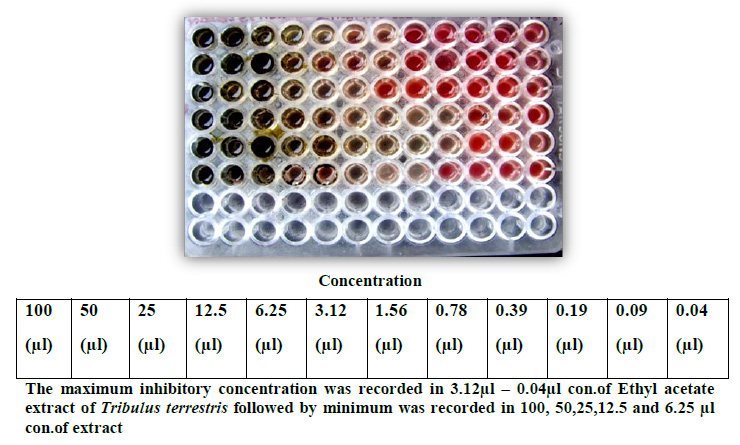 |
Figure 7: (A,B) Seeds of Ceropegia bulbosa Roxb. var. bulbosa |
(2) Botanical name- Sarcostemma viminale (L.) R.Br. Syn. Euphorbia viminalis L.
Accepted Scientific Name is Cynanchum viminale
(L.) L.
Local name- Caustic vine, khir-khimp, somlata, Melktou, Rapunzel
“Sarco” is Greek word meaning fleshy while “Stemma” refers to the fleshy inner corona. The ‘caustic’ in the common name referring to the burning power of the released latex.
Global Distribution: Myanmar, South Africa, Botswana, Namibia and all inland parts of southern Africa, Kenya, India, Burma, in coastal regions of Australia, China, Philippines, Thailand and New Caledonia,
Indian Distribution: Keralas, Bengal and Rajasthan
Habit
Vigorous shrub, rarely tree-like, erect trailing or twining, perennial, grows more luxuriantly during rainfall, requires rocky habitat with soil as a component, grows in association with Euphorbia caducifolia, it may be a type of indirect interaction that allows facilitation of congeneric species. When traits have diverged within genus, the competition is relaxed, that allows the coexistence of species. All parts of the plant exude milky latex when damaged (Fig.1).
Root
10 specimens from different location were used for recording texture, type and measured by calculating mean value. Primary as well as secondary (adventitious) root is present, as branches whenever comes in contact with substratum, they forms stolons. Primary root profusely branched, as compared to adventitious root, root hairs are present all along the length of branches. Primary roots pale-brown goes 15-20 cm down, the substratum (Fig.2).
Leaf
Leaves are highly reduced they develops on nodal region of stem, sessile, simple, opposite, exstipulate, apex acute, margin slightly crenate, caducous or turns scaly, 2-3 mm long (Fig.3).
Stem
Cylindrical, rigid at base, radius 3.5 cm, erect, trailing, sprawling, scrambling or lianescent, with or without a main stem, green, succulent, pubescent when young, glabrous when mature, internodes 9-14cm long, sometimes 2 opposite branches arises from node rather than origin of leaf, base woody and with a very thick corrugated corky bark when old(Fig. 4).
Flower
Floral diameter was recorded with 10 specimens from same plant. The details of measurement and floral features is as follows; shape when closed is like an embossed star, aroma of jasmine, many flowers originate from a common point on pedicel (30-40 in a bunch), simple umbel, the main axis ends at a summit of peduncle; maximum length of pedicel reaches upto 1.2cm, hermaphrodite, regular, tetra-pentamerous, actinomorphic, hypogynous, glandular, bracteates; (1mm in length), fused at lower ends, glabrous, acute; sepals; 5 (maximum length 5mm), creamish yellow, facing inwards, obtuse, imbricate, membranous, alternating with bracts, petals; fused to make 2 membranous rings (outer and inner) like structures bearing stigma and staminal column; staminal column fused with stigma to form gynostegium and the gynostegium is in direct contact with inner coronary flap, that in turn is attached with outer coronary flap, staminal column bears translator, nectarines present at angle of pollinia and stigmatic disc, pollinia; sabsessile, flattened and lanceolate, creamish yellow; ovary; bicarpellary, apocarpus, style free, stigma makes a pentangular disc to support translator, marginal placentation, many ovules/locules (Fig.5).
Fruit
A follicle, maximum length reaches up to 10.5cm, width vary between 0.6-0.8cm, many seeded, tapering at distal end, broad at proximal end, turns brown when ripe, it splits along one suture, it is produced from bicarpillary superior ovary (Fig.6).
Seed
0.8-0.9mm x 0.2-0.3mm, aril absent, oblong, conical at one end and broader at another end, one surface flattened another convex, endospermic, uneven surface, edges sharp, with pappus (coma) at conical end, blackish brown, membranous (Fig. 7).
Plant morphology may help to understand basic conceptual aspects as new approaches need to correct a past draw back. Morphological description may serve as a conceptual framework to link with other approaches, thus this approach may be seen as an integrated and continuous process that goes through reference points.
The precise morphological description of Sarcostemma viminale (L.) R.Br. is still lacking and we have tried to describe it at our best.
The family Asclepiadaceae is unique due to the presence of pollinia and milky latex. Present investigation reveals several interesting morphological similarities and differences in both plants belonging to same family, even some differences have been observed in two varieties of same genus i.e. Ceropegia bulbosa. The author has reported differences right from habitat that occurs till seed formation. All the plants under study have successfully adapted to harsh and stressed climate by showing remarkable adaptation like leaf less condition, lanceolate-linear leaves reducing transpiring zone, green stem substituting the absence of leaves. Twinning habit also protects them against strong winds of Thar. Thick texture of leaves of Ceropegia supports them against high wind currents.
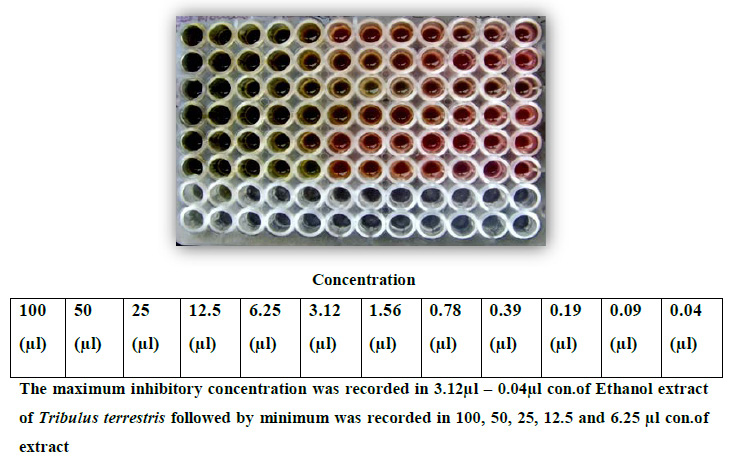 |
Figure 8 |
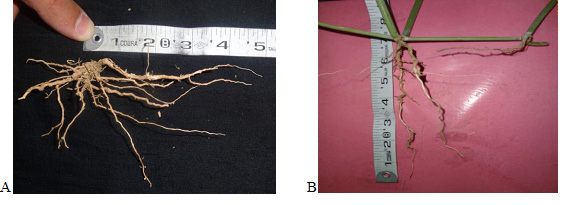 |
Figure 9 |
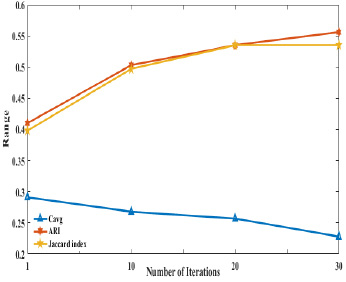 |
Figure 10 |
Ceropegia is therefore example of a large genus that has diversified despite an apparently functionally specialized (Fenster et al., 2004; Ollerton et al., 2007).
Sarcostemma is a genus that shows peculiar morphological features to adapt in Thar desert. We always have reported it growing in association with Euphorbia caducifolia, most probably it facilitates Sarcostemma for its survival and shows commensalistic relationship. Rationale of this ‘proxy’ is Darwins idea that congeneric species are similar in many habits and constitituation, have high overlapping niches and therefore compete more strongly than species of distant genera (Violle et al., 2011).
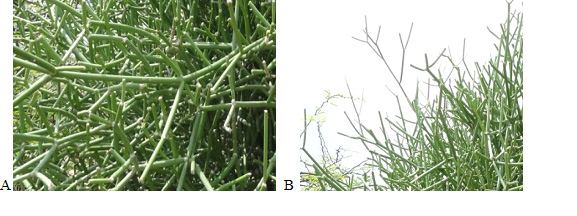 |
Figure 11 |
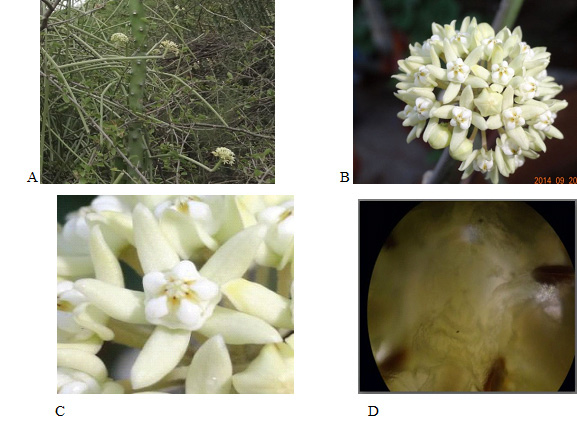 |
Figure 12 |
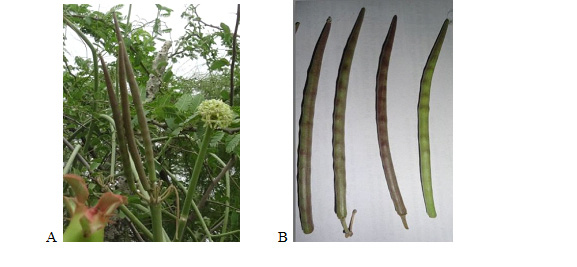 |
Figure 13 |
Burns and Strauss (2011) demonstrated that most species germinate well at conspecific and congeneric sites and less well at confamilial and distant relative sites. Leaf less habit, photosynthetic substitution, presence of more amount of latex, strong tap root and rocky – stony habit preference are some of the strategies that the plant adapt to stay in stressed climatic conditions.
Both the plants under study are typically endangered so they need most care and conservation. Recently Ceropegia species have attracted attention of several workers due to its rare occurrence, it is difficult to propagate, cultivate and maintain in gardens and hence its conservation is a major challenge to biologists (Sagar et al., 2014).
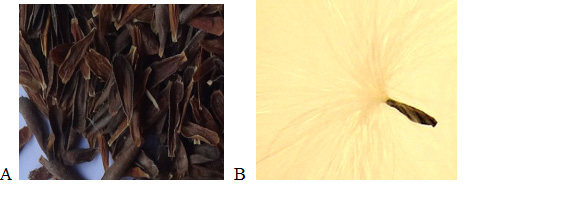 |
Figure 14 |
Once the description of plant forms is available then the role played by genes and proteins in the maintenance or stability of shapes will be better understood, it strongly needs an elaborative and theoretical approach towards morphology rather than sophisticated experimentation that may be required later on to unveil molecular status.
Acknowledgement
The authors are thankful to Prof. P.K. Kasera for providing academic support and the CAS Department of Botany JNV University, Jodhpur (Rajasthan) for providing infrastructure and technical support.
References
Angiosperm Phylogeny Group (2003) An update of Angiosperm Phylogeny Group (AGP) classification for orders and families of flowering plants: APG II- Bot. J. Linn. Soc. Vol. 141: Pages 399-436
Angiosperm Phylogeny Group (2009) An update of the Angiosperm Phylogeny Group Classification for the orders and families of flowering plants: APG III. Botanical Journal of the Linnean Society Vol. 161 No 2: Pages 105-121
Bentham, G. (1873a) Compositae. In: Bentham G., Hooker, J. D. Genera Plantarum, Vol.11 No 1 London: Lovell Reeve, Pages 163-533(plus Addenda et Corrigenda)
Bentham, G. (1873b) Notes on the classification, history and geographical distribution of Compositae. J. Linn. Soc. Bot. Vol. 13: Pages 335-577
Boomibalagan P., Eswaran S. and Rathinavel S. (2014) Traditional uses of medicinal plants of Asclepidaceae by Rural people in maduroi district, Tamilnadu, India. International Journal of Botany Vol. 9: Pages 133-139
Bruyns P. V. (2003) Three new succulent species of Apocynaceae(Asclepiadoideae) from Southern Africa. Kew Bulletin Vol. 58 No. 2: Pages 427-435
Burns J.H. and Strauss S.Y. (2011) More closely related species are more ecologically similar in an experimental test. Proceeding of the National Academy of Sciences, USA Vol. 108: Pages 5302-5307
Cooke T. (1958) The Flora of the Presidency of Bombay. Botanical Survey of India, Kolkata Vol. 2: Pages 238-243
Dyer R. A. (1983) Ceropegia, Brachystelma and Riocreuxia in southern Africa, Balkema, Rotterdam 227-238
Fenster C. B., Armbruster W. S., Wilson P., Dudash M. R. and Thomson J. D. (2004) Pollination syndromes and floral specialization. Annual Review of Ecology, Evolution and Systematics Vol. 35: Pages 375-403
GRIN species records of Sarcostemma (2011). Germplasm Resources Information Network. United States Department of Agriculture
Hinemath S. P., Bodani S., Hunasagatta S. K., and Patil S.B. (2000) Anti-fertility and hormonal property of flavones of Striga oroleanchioider. Eur J Pharmacol Vol. 391: Pages 193-197
Indhumathi D. and Kalvimoorthi, (2010) Pharmacognostic preliminary phytochemical and anti-microbial activity on the whole plant of Sarcostemma secomone (L.) Bennet. International Journal of Pharmaceutical Science Review and Research Vol.1 No 2: Pages 49-55
Madhumita G. and Saral A. M. (2009) Antimicrobial activity of Successive extracts of Thevetia nerrifolia. Asian Journal of Chemistry Vol. 21: Pages 2471-2472
Madhumita G. and Saral A. M. (2009) Free radical scavenging assay of Thevetia nerrifolia leaf extracts. Asaian Journal of Chemistry Vol. 21: Pages. 2468-2470
Nayar MP and Sastry AR (1987-89) Red Data Book of India Plants I-III (BSI) Calcutta
Ollerton J., Killick A., Lamborn E., Watts S. and Whiston M. (2007) Multiple meanings and modes: on the many ways to be a generalist flower. Taxon Vol. 56: Pages 717-728
Percival MG (1969) Floral Biology (Pergaman Press) Oxford 1-243 Prain D. (1903) Bengal Plant. Vol.1.Calcutta
Sagar H. C., Aditya P. K., Pratik V. P. and Preeti V. P. (2014) First report of Ceropegia bulbosa Roxb. from coastal habitat of Kulaba Fort, Alibag, Maharashtra. Indian Journal of Plant Sciences Vol. 3 No.4 : Pages 23-27
Shetty B.V. and Singh V. (1993) Flora of Rajasthan. Botanical Survey of India, Culcutta. Vol. 3: Pages 861-1246
Violle C., Nemergut D. R., Zhichao Pu, Jiang L. (2011) Phylogenetic limiting similarity and competitive exclusion. Ecology Letters Vol. 14: Pages 782-787
Yadav S.R. and Kamble M.Y. (2008) Threatened Ceropegias of the Western Ghats and Strategies for their conservations. In: Special Habitatas and Threatened Plants of India, edited by Rawal GS, ENVIS. Bulletin of Wildlife and Protected Area, Wildlife Institute of India, Deharadun, India. Vol. 11 No.1: Pages 239-241


